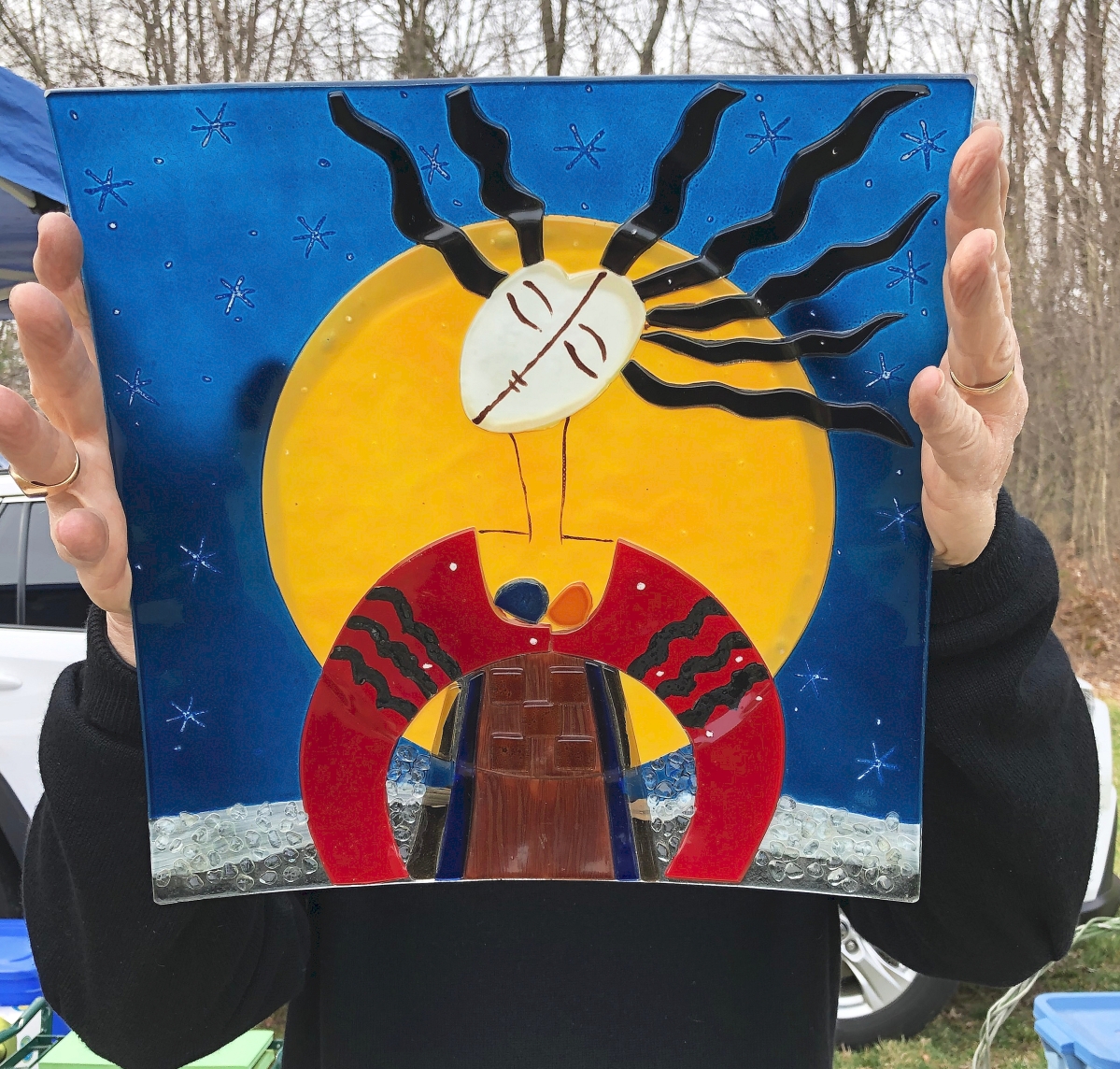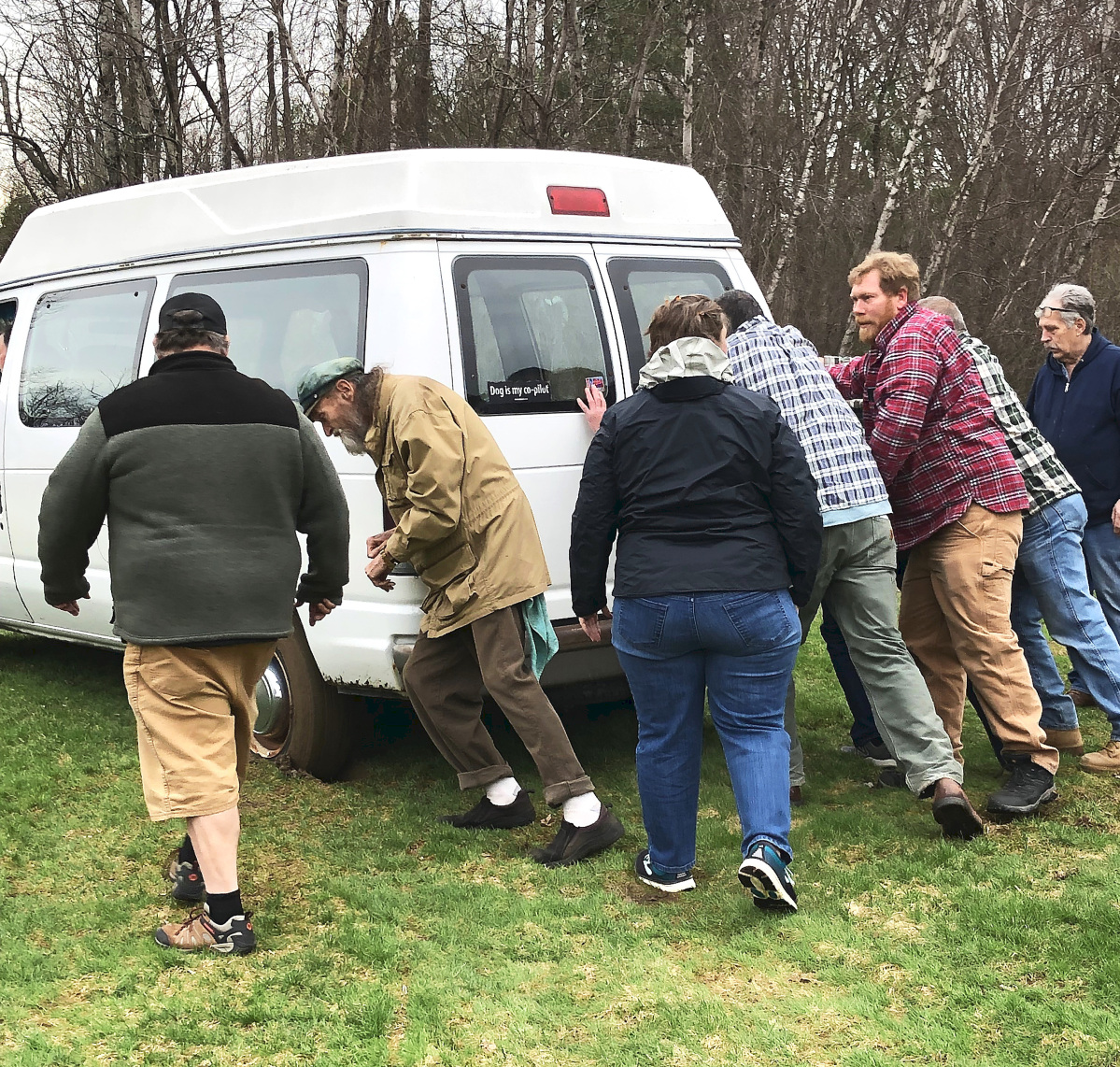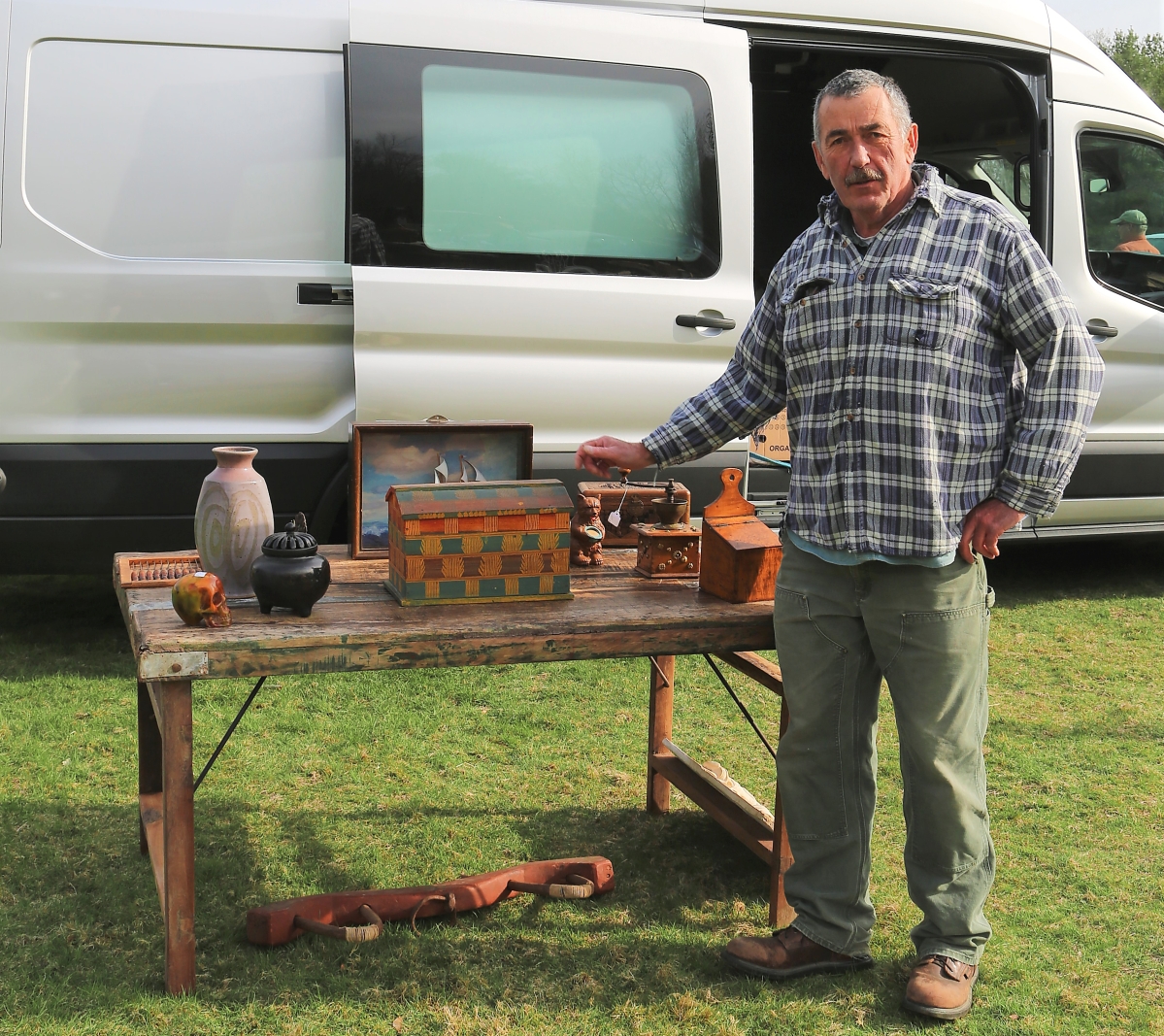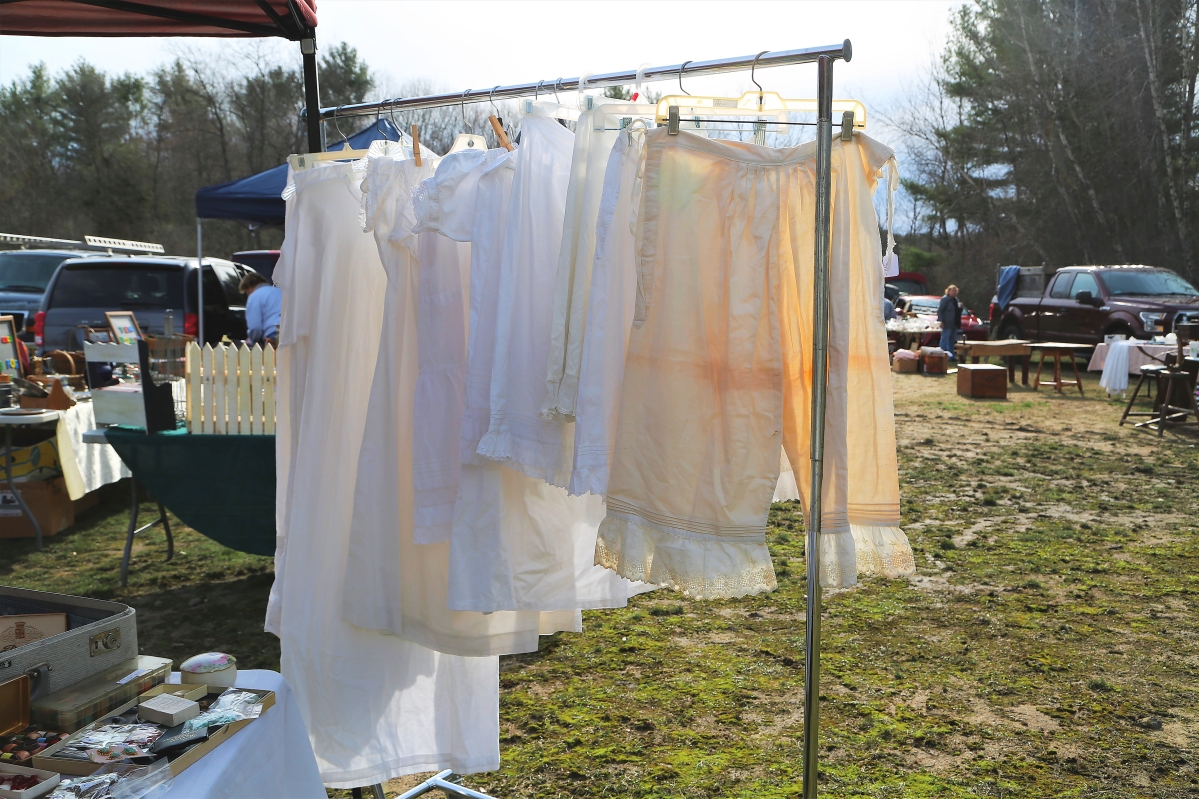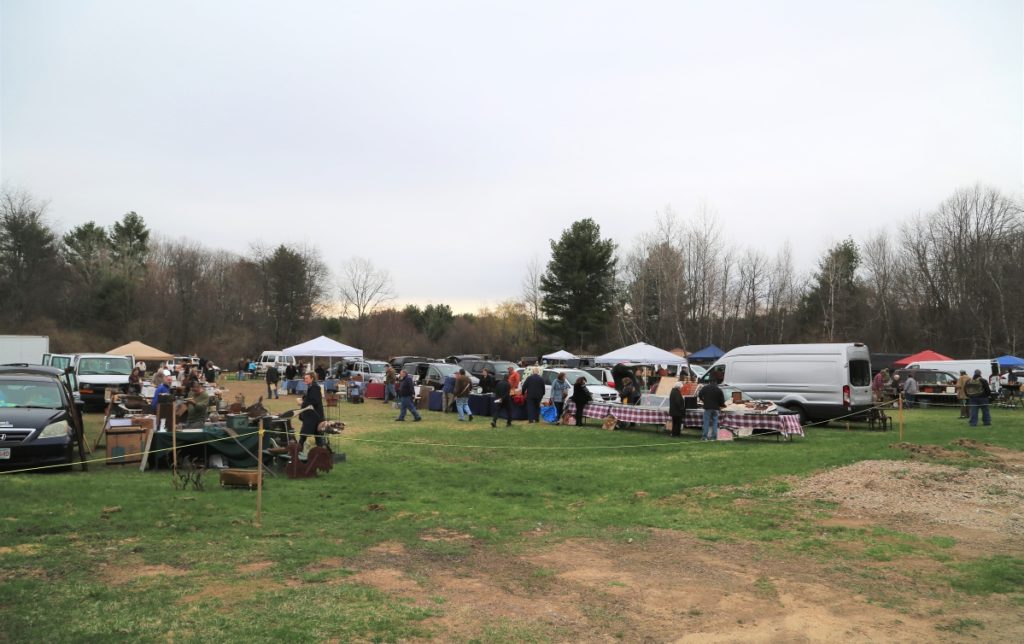
About a half an hour after the opening, there were numerous buyers shopping.
Review By Rick Russack, Photos by Rick Russack & Z.G Burnett
DOVER, N.H. – Rachel and Josh Gurley gambled a bit scheduling the first of their outdoor shows at the Dover Elk’s Lodge in mid-April. They won. Nature cooperated, but several of the dealers were recalling Aprils in the past with heavy snowstorms in the area. (As it turned out, on the Monday following the show, parts of New Hampshire received more than 6 inches of snow.) However, the show, which ran smoothly with about 50 dealers, opened at 9 am on April 16 and closed at 1 pm. There was a $6 fee for the early buyers and free admission after 10 am. This formula has been successful for the Gurleys in the past. Attendees at Gurley shows, at least the “regular” crowd, know what they’ll find. Plenty of Americana – redware, stoneware, early furniture, advertising, textiles, painted woodenware, etc. The fun of these informal shows is that almost anything may appear, such as garden fixtures, vinyl LPs, books, postcards, Mission and midcentury items, Native American jewelry, Oriental rugs, Asian items and more. With about a 200-year difference in age, this time there was a pair of Battersea enamel candlesticks and an early Winnie-the-Pooh cloth figure. In other words, you just don’t know what you might find. These shows will run once a month through September and fit with the rest of the shows the Gurleys have scheduled.

Sue Jewett, Loveworn Antiques, Kingston, N.H., brought a selection of underpinnings catching some scarce sunrays. Most were priced between $20 and $25.
Most of the material on display was fresh, having recently been acquired by the exhibitors and sometimes being offered for sale before much research has been done. Trade signs were available in several booths. Mike Lord, Wells, Maine, may have had the largest assortment, with the most expensive being a large Wolf’s Head automotive sign, which was priced at $1,000. He commented, “Signs are really hot now. There are signs for almost any interest a customer might have. Automotive, beverages, foods, store signs, traffic signs, tobacco, you name it. They’re an inexpensive way to add interest to a room and many are ready to hang.” Lord also has been promoting Brimfield Online Trading, a Facebook page connecting buyers and sellers.
One of the earliest items on the field belonged to Hilary Nolan, Falmouth, Mass. The pair of Battersea enamel candlesticks he had dated to about 1750. They don’t appear too often, especially at outdoor shows, and this pair was priced $950. Nolan also had a very nice primitive painting of a New England town scene, with several colonial houses along a tree-lined street with a large elaborate town house in the center. It was on a panel, but Nolan thought it didn’t date much earlier than 1900. He was asking $1,200 for it. Needing some work, but also early, dating to about 1800, was a red Chippendale slant front desk that belonged to Ernie Eldridge, Windham, Conn., and he priced it at just $150. Other early items included a brass-inlaid camphor wood chest that belonged to Bob Moore, Newton, N.H., and was priced $375. Colette Donovan, Merrimacport, Mass., specializes in early textiles, and she brought three early homespun overshot coverlets.

Colette Donovan specializes in early textiles. She brought three early Nineteenth Century homespun, overshot coverlets.
Twentieth Century objects included a fused glass wall hanging that belonged to John Maciejowski, Melrose, Mass., and a very well-done Mission period pipe rack. Maciejowski said he did not know who made the colorful fused glass piece and priced it $75. He thought it had been made about 1970. The carved oak Mission period pipe rack belonged to Mike Lord. It depicted a man riding a pig. The design may have been inspired by early folk tales as there are several legends relating to similar designs. Lord said that he had found it recently in Virginia and priced it $345.
Folk art on the field ranged from hooked rugs to paint-decorated boxes. One hooked rug depicted a pointed-ear cat with unusual coloring – half orange, half white with streaks of yellow, a yellow and black mustache and one green eye. There was probably quite a story with that rug at one time, but Joan Mollan, Moon Gold Antiques, Marblehead, Mass., did not know that story. She really liked it, saying, “I almost couldn’t let it go.” She priced it at a reasonable $225. A brightly painted wooden box belonged to Bob Foley, Gray, Maine, who priced it $365.
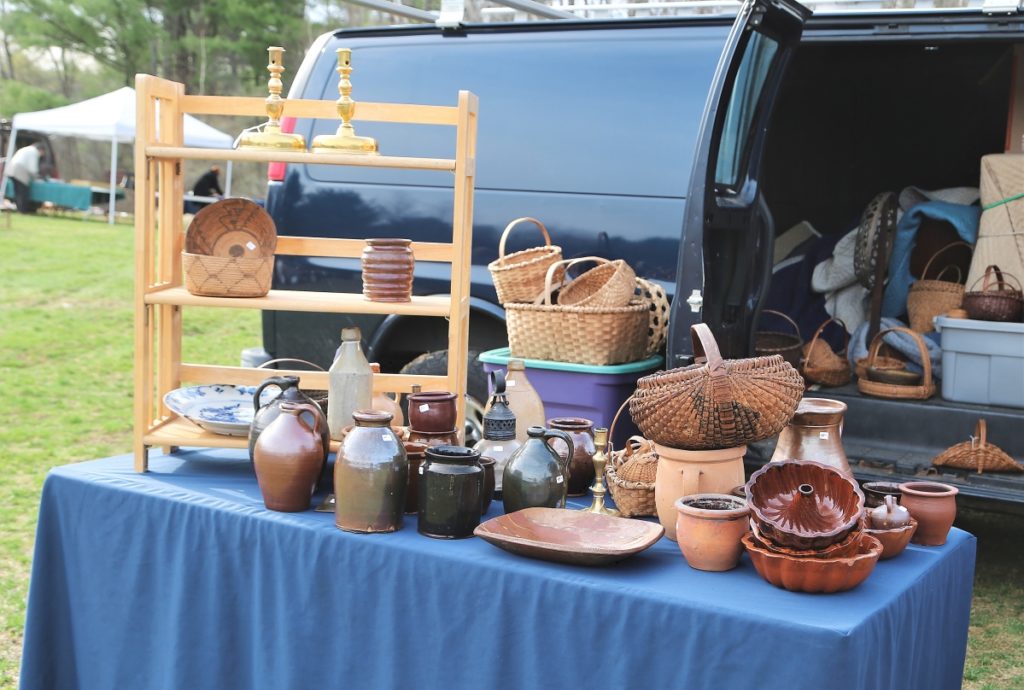
Brian Cullity, Sagamore, Mass., had recently acquired a collection that included numerous pieces of redware. He brought about 25 pieces, none priced higher than $150.
They weren’t owned by the same dealer but there were two interesting items relating to early boxing. Lanny Lambert, Portland, Maine, had a framed shadowbox with three well-worn, small leather boxing gloves, framed together with two Spalding advertisements for the gloves. The ads detailed the “patent palm lacing” and included the retail prices for different sizes and grades of gloves. The most expensive gloves were $6 a pair. They appeared to date from the early 1920s but may have been a little earlier as the back of the shadowbox was covered with pages from Harper’s Weekly, which discontinued publication in 1916. It was priced $125. The other boxing-related item belonged to Peter Lombardi, Parsonfield, Maine. It was a circa 1920s leather punching bag, also well worn from use. Lombardi said he had found it recently in Nova Scotia and was asking $55.
Rachel and Josh Gurley make a point of making things as simple for their exhibitors as possible. Rachel said, “For us, it’s really all about our exhibitors. We want them to succeed so we try different things – like the free admission after 10 am. That brings in folks that otherwise might not attend. That means a family can shop the show without any expense.” A few days after the show, Rachel Gurley commented, “We had a good crowd, and they were hungry to buy. The exhibitors were there to sell, prices were reasonable, and that’s a good combination. There was a wide selection of stuff, and the weather cooperated. The show ran until 1 pm and the rain held off. Our next show there is May 21, and we’re running once a month.”
For additional information, www.gurleyantiqueshows.com or 207-396-4255.

















